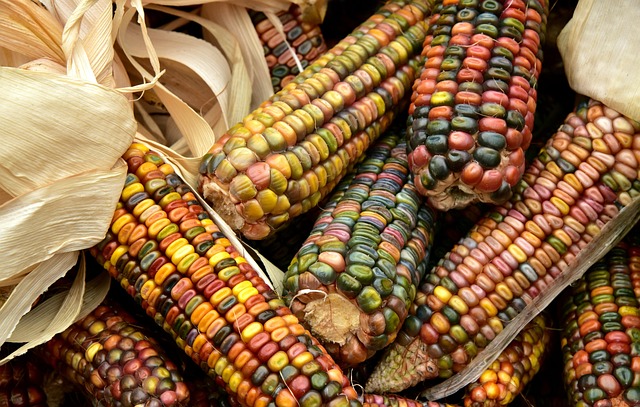Agriculture and Investment: A Match Made for Growth
Agriculture has long been the backbone of economies worldwide, providing sustenance, jobs, and economic stability. As global populations continue to rise and climate change poses increasing challenges, the need for innovative agricultural practices becomes essential. This is where investment plays a critical role, leading to a resurgence in agricultural growth. In this article, we will delve into the intricacies of how agriculture and investment intersect, fostering growth, sustainability, and food security.
The Importance of Agriculture in Global Economy
Agriculture remains a crucial sector in many economies, particularly in developing countries where a significant portion of the population relies on farming for livelihood. In fact, agriculture accounts for about 10% of global GDP, employing over a billion people worldwide. The sector influences other industries, including manufacturing, services, and trade, making it a linchpin for overall economic development.
Beyond mere economic statistics, agriculture is fundamental to food security. With the United Nations predicting that the world population could reach 9.7 billion by 2050, ensuring that there is enough food available becomes a pressing challenge. However, traditional agricultural practices may not suffice to meet these growing demands, necessitating a substantial influx of investment focused on innovative techniques and technologies.
Investment: The Catalyst for Agricultural Innovation
Investment serves as the driving force behind agricultural innovation. External funding can elevate farming practices, improve productivity, and enable farmers to adopt new technologies. There are various avenues for investment in agriculture, including private investors, venture capital, government funding, and international organizations. Each of these play a pivotal role in paving the way for agricultural advancements.
Types of Investment in Agriculture
Investment in agriculture can take many forms, and understanding these various avenues is essential for recognizing their impact on growth:
Equity Investment
Equity investment involves purchasing shares in agricultural entities, which allows investors to directly partake in the profits and operations of the business. This type of investment encourages innovative practices by providing capital for scaling operations, adopting sustainable farming techniques, and enhancing supply chains.
Debt Financing
Farmers often struggle to obtain loans due to the perceived risks of agriculture. However, debt financing can empower farmers to invest in essential resources like seeds, equipment, and technology, enabling them to increase production and profitability. With proper risk assessments and flexible repayment terms, debt financing can be an effective tool for growth.
Public Funding and Grants
Governments often provide grants and subsidies to encourage agricultural innovation, particularly in underprivileged regions. Such funding can help farmers access modern technology, attend training programs, and improve infrastructure, all of which contribute to enhanced agricultural output.
Venture Capital
Venture capital focuses on high-potential startups that can revolutionize the agricultural landscape. By investing in agri-tech companies, venture capitalists support innovations that improve efficiency and reduce waste in food production. Technologies such as precision agriculture, biotechnology, and climate-smart farming practices all benefit from this type of investment.
The Impact of Technology on Agriculture
Investment in technology has led to significant advancements in agriculture, enhancing productivity and sustainability. Technologies such as artificial intelligence, the Internet of Things (IoT), and advanced biotechnology are revolutionizing traditional farming practices.
Precision Agriculture
Precision agriculture employs data analytics and IoT devices to monitor crops and optimize resource usage. This method enables farmers to make data-driven decisions, enhancing yield while minimizing waste. Investors willing to fund precision agriculture ventures can yield considerable returns while contributing to environmental sustainability.
Biotechnology
Biotechnology has advanced the field of agriculture by creating genetically modified organisms (GMOs) that are resistant to pests and diseases. Investors in biotech firms can promote research and development that offers farmers solutions to combat the increasing threats of climate change and food scarcity.
Sustainable Practices
Investing in sustainable agricultural practices helps mitigate the environmental impact of farming. Techniques such as organic farming, crop rotation, and permaculture minimize the use of harmful chemicals and preserve biodiversity. Investors committed to sustainability can see long-term benefits and foster a healthier planet.
Challenges to Agricultural Investment
While the prospects for agriculture and investment are bright, challenges continue to complicate this relationship. Farmers often face barriers that discourage investment, including lack of access to markets, inadequate infrastructure, and high production risks.
Market Access
Farmers, particularly in developing countries, often struggle to access larger markets. Improving infrastructure can help bridge this gap, yet the initial investment required is substantial. Investors need to consider ways to support market access through integrated supply chains and cooperative ownership models that enable collective selling.
Risk Factors
Agriculture is inherently risky due to its vulnerability to weather conditions, pest infestations, and market volatility. This risk may deter potential investors. To mitigate this, developing better insurance products and risk management strategies can help cultivate a more favorable investment climate.
The Future of Agriculture and Investment
The relationship between agriculture and investment is continually evolving. As global demands for food grow and environmental concerns mount, the need for innovative solutions becomes imperative. Investors have a unique opportunity to shape the future of agriculture through their capital, expertise, and commitment to sustainability.
Emphasizing collaboration among various stakeholders—including farmers, technology providers, and investors—will be essential in overcoming the challenges that lie ahead. By investing in agriculture, we can not only drive economic growth but also pave the way for food security and environmental stewardship.
Conclusion
Agriculture and investment form a symbiotic relationship that fosters growth and innovation. With rising global demands for food and emerging challenges posed by climate change, the impact of strategic investments in agriculture cannot be overstated. It is crucial for investors to recognize the potential within this sector and to understand their role in shaping a sustainable and secure food system for future generations. Ultimately, by fostering collaboration and innovation, agriculture and investment can indeed be a match made for growth.


